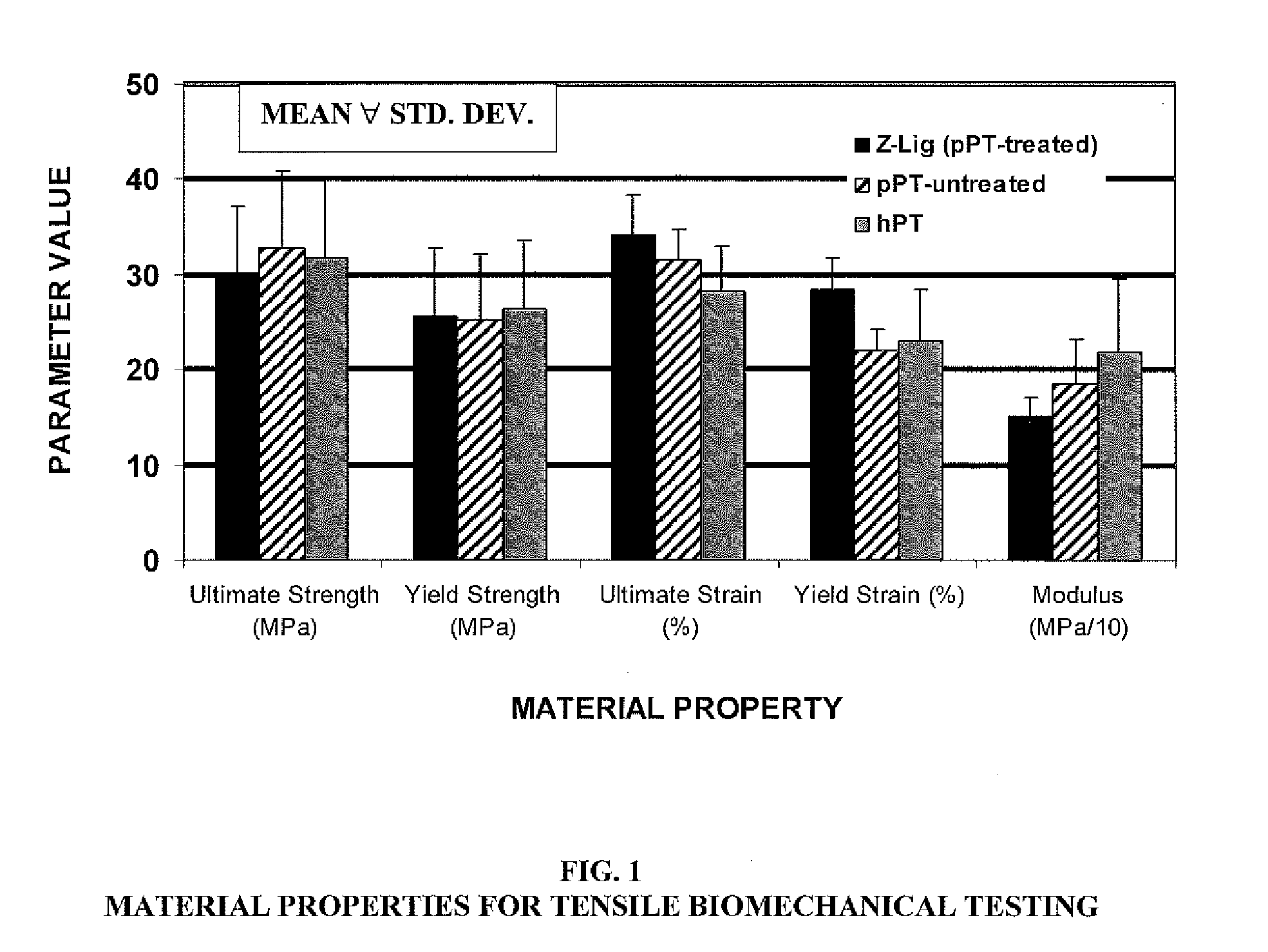Sterilized xenograft tissue
a sterile, graft technology, applied in the direction of prosthesis, joint implants, ligaments, etc., can solve the problems of not addressing the potential problem of bacteriostasis, antibiotic/antifungal solutions will not eliminate the spores of organisms, etc., to achieve the effect of facilitating integrity and implantability
- Summary
- Abstract
- Description
- Claims
- Application Information
AI Technical Summary
Benefits of technology
Problems solved by technology
Method used
Image
Examples
example 1
Source Material Control and Viral Inactivation
[0062]The viral safety of the porcine device was evaluated by assessment of the animal source profile and evaluation of the viricidal activity of the treatment process. The tissues used originate from six-month-old animals from a closed swine herd. Animals are subjected to an ante and post mortem health inspection by licensed veterinarians and processed in a USDA-inspected facility. Tissue identification allows tracking of harvested materials forward to the finished product and backwards to the animal of origin. No modified live viral vaccines are used for disease control in the production facility. There is no cross contamination with other animal sourced materials at any point in the harvesting or manufacturing processes. Viral reduction values of greater than six-logs were observed for porcine parvovirus, influenza A, pseudorabies virus and reovirus 3 during an evaluation of the viricidal activity of two steps within the treatment pro...
example 2
Transmissible Spongiform Encephalopathy
[0070]The transmissible spongiform encephalopathies (TSE) family of diseases includes scrapie, which affects sheep and goats; transmissible mink encephalopathy; feline spongiform encephalopathy; chronic wasting disease of deer and elk; and in humans, kuru, both classic and variant Creutzfeldt-Jakob disease, Gerstmann-Straussler-Scheinker syndrome, and fatal familial insomnia. Bovine spongiform encephalopathy (BSE), widely referred to as “mad cow disease,” is a chronic degenerative disease affecting the central nervous system of cattle. TSE's have also been reported in captive exotic ruminants, and exotic and domestic cats. The agent isolated from several of these cases is indistinguishable from BSE in cattle suggesting the occurrence of TSE's in these species resulted from BSE-contaminated feed.
[0071]The nature of the infectious agent that causes BSE and scrapie is unknown. Currently, the most accepted theory is that the agent is a modified for...
example 3
[0073]As part of process development, we initiated tests to characterize the pre-implantation biomechanical properties of bone-patellar tendon-bone allografts. We have implemented clinically relevant controls for comparative biomechanical evaluation. Anatomical, structural and cellular similarities between pig and human patellar tendon have been documented and support porcine patellar tendon as a viable choice for human graft biomechanical modeling and alternative. Fuss F K. “Anatomy and function of the cruciate ligaments of the domestic pig (Sus scrofa domestica): a comparison with human cruciates.”J Anat 178: 11 (October 1991). The overall aim of the testing was an internally controlled comparison of the Z-Lig anterior cruciate ligament replacement device (an embodiment of the invention) to human bone-patellar tendon-bone constructs. An additional control group included unprocessed porcine patellar tendon, treated and harvested as cadaveric grafts fresh frozen...
PUM
 Login to View More
Login to View More Abstract
Description
Claims
Application Information
 Login to View More
Login to View More - R&D
- Intellectual Property
- Life Sciences
- Materials
- Tech Scout
- Unparalleled Data Quality
- Higher Quality Content
- 60% Fewer Hallucinations
Browse by: Latest US Patents, China's latest patents, Technical Efficacy Thesaurus, Application Domain, Technology Topic, Popular Technical Reports.
© 2025 PatSnap. All rights reserved.Legal|Privacy policy|Modern Slavery Act Transparency Statement|Sitemap|About US| Contact US: help@patsnap.com


